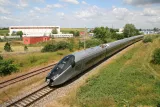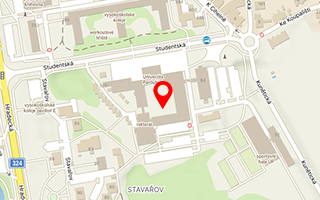Published: 24.09.2020
The role of rail transport has undergone a major transformation over the past few years. It is undergoing a number of processes, which may be referred to as liberalization and digitalization, entailing both risks and opportunities. Therefore, the rail transport is at an important crossroads as to its further development.
All of the processes are being introduced to guarantee non-discriminatory access to the railway market and enhance the safety and reliability of rail transport. The role of the rail transport in the future must be the same as it was in the past: it must be the core of both passenger and freight transport.
Sometimes, such an effort compromises the capacity of the railway network or its part. Similarly, measures to enhance safety may, in some cases, reduce the headway and route capacity not only with respect to selected routes, but also the entire network. Therefore, it is important to use new findings from railway technology, and design effective measures and procedures to increase the capacity and maximize route capacity, while maintaining the quality, reliability and safety standards.
What affects rail network capacity
The most pressing issues include introducing Automated Train Operation, ETCS, unification of traction power network or renovation of stations, junctions as well as effective management of engineering works. These factors greatly affect the rail network capacity. In addition, it shows a new tendency to use of modern simulation systems when designing new structures and optimizing the existing network.
What is equally important is the quality of the services provided to passengers. In this respect, the current trends include real-time passenger information systems, ensuring quality standards, smooth interchanges or management of any traffic disturbances. In terms of freight transport, whose profitability greatly depends on the harmonization of transport conditions with road transport, it is necessary to study how to align it with logistics systems, and incorporate rail transport into supplier chains. To make rail transport more profitable and competitive, it is necessary to make effective links within the multimodal logistics chain including implementation of the estimated time of arrival (ETA) and development of modern transport technologies, digitalization, automation and the use of AI. The plan for introducing Single European Railway Area (SERA) must be also reflected.
If the management of rail transport is based on direct V2I communication, it may make railway transport more effective, reliable, safer and cheaper, which is extremely important for non-corridor routes. If a new national strategy and architecture is designed, this area may see a more effective implementation of the ERTMS/ETCS in the railway system of the Czech Republic. This will be based on effective integration of the ERTMS/ETCS features (routes and vehicles, GSM-R), existing technology for management and assurance of safety of rail transport (station, route and crossing security systems as well as Automated Train Operation) and the centralized traffic management. To make the implementation successful, it is necessary to design a model of a uniform management and security device that will be based on distributed technology with object controllers and centralization of logical functions.
Next step may involve issues such as shunting safety, requirements for autonomous train operation (GoA3, GoA4) and virtual coupling. The implementation must also be backed by guidelines for introducing the proposed security and management strategy for project preparation, construction and operation of the system under the existing conditions in the Czech Republic. Therefore, it is advisable that the system be tried and tested in a simulated environment.
V2I and V2V communication
The system must also involve vehicle-to infrastructure (V2I and V2V) communication with all features of the traffic system; the communication must use high-quality, -speed and -capacity data connection. The options available include the use of FRMCS or 5G networks of public operators, ITS G5 open standard designed for V2V communication in road traffic. In the long term, it will be necessary to define comprehensive requirements for V2I communication as required by rail transport in the context of high-speed rails, corridors and non-corridor routes in the Czech Republic, usable for other means of transport. This communication system will also be usable when introducing automated vehicle operation (driverless operation GoA3 and mainly GoA4) in ensuring high-resolution video streaming, data transfer with guaranteed response time lag and high level of safety & security. Another issue to address is the transition from the existing GSM-R system (which will be supported until 2030) to new technologies including FRMCS, 5G, ITS G5 with comprehensive coverage, reliability and safety being the priorities.
Strategy for further development needed
Such key tasks may not be dealt with effectively without knowledge of the existing system and the proposed desired system thanks to functional and organizational architecture and procedural map of the rail transport system. Such a strategy, which may, in methodological terms, derive from road traffic, would describe the existing situation and its characteristics (high number of operators on the rail market as opposed to the need for high functional consistency of the rail system) as well as the function, organizational units and processes that are absent in the system today even though they must or should be present. An important component of the strategy will be evaluation, or a proposal, of indicators of functions and processes, and their compatibility with the pre-defined goals and measures in light of the plan for extensive digitalization of the transport industry.
For digitalization to be possible, horizontal communication between individual stakeholders must be enhanced. A logframe could be used to design and organize basic characteristics of the system and their relations. It is necessary to define the goals and means to achieve such goals as well as their relations. The design must be based on the theory that what can be measured can be managed. After the system has been set up, the logframe will make it possible to conduct an internal evaluation and verification.
The article is translated from Dopravní týdeník.


